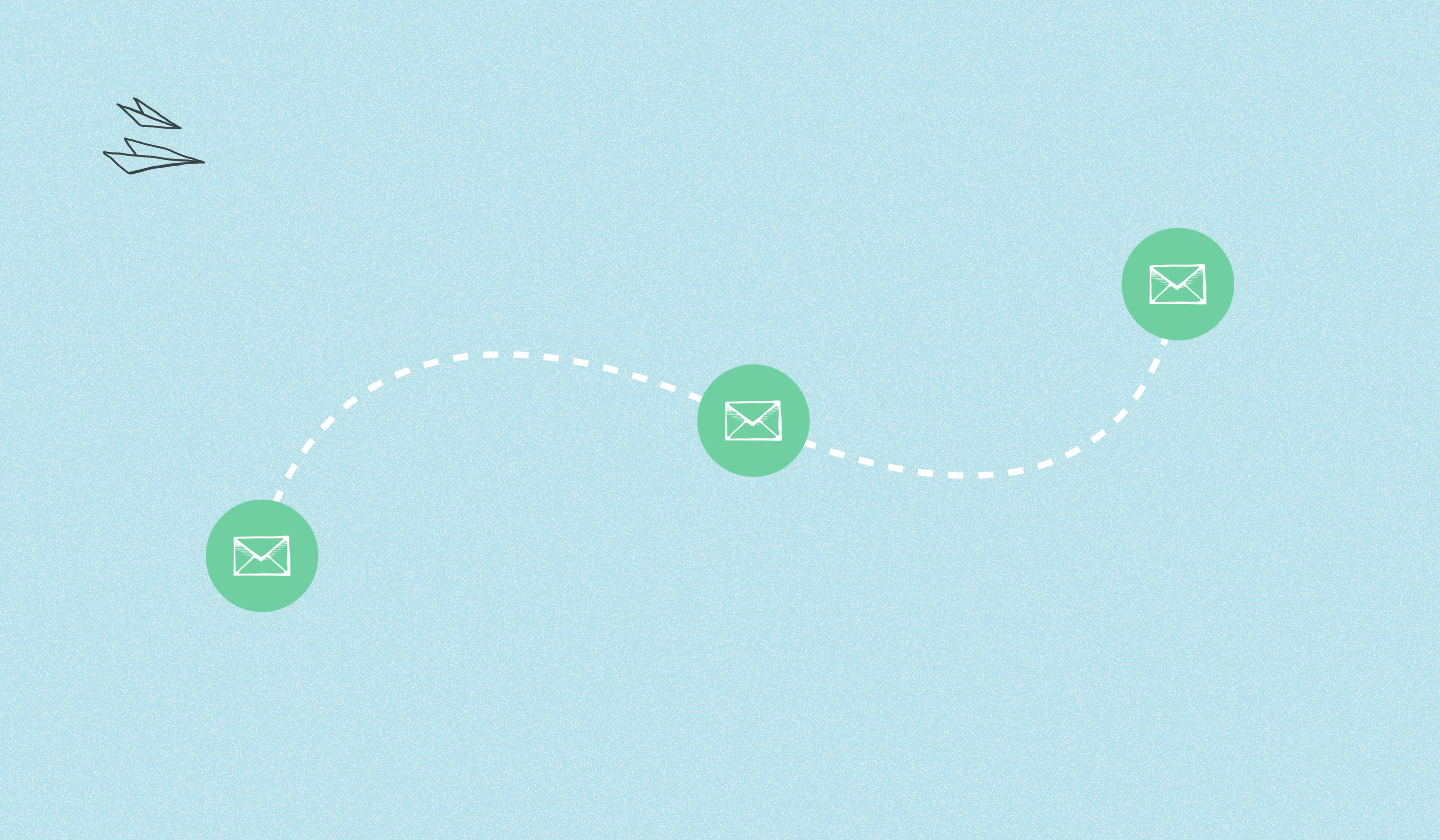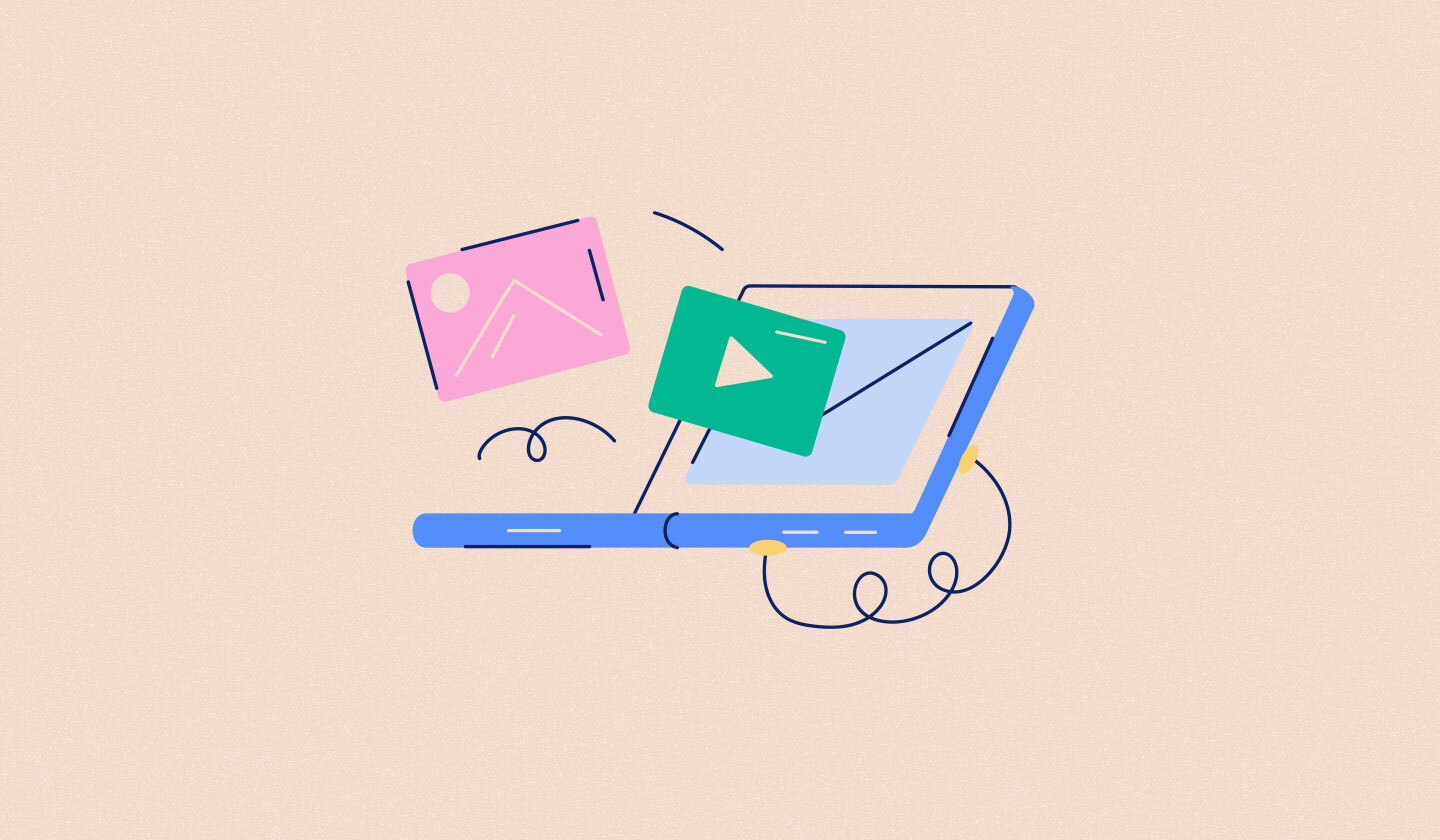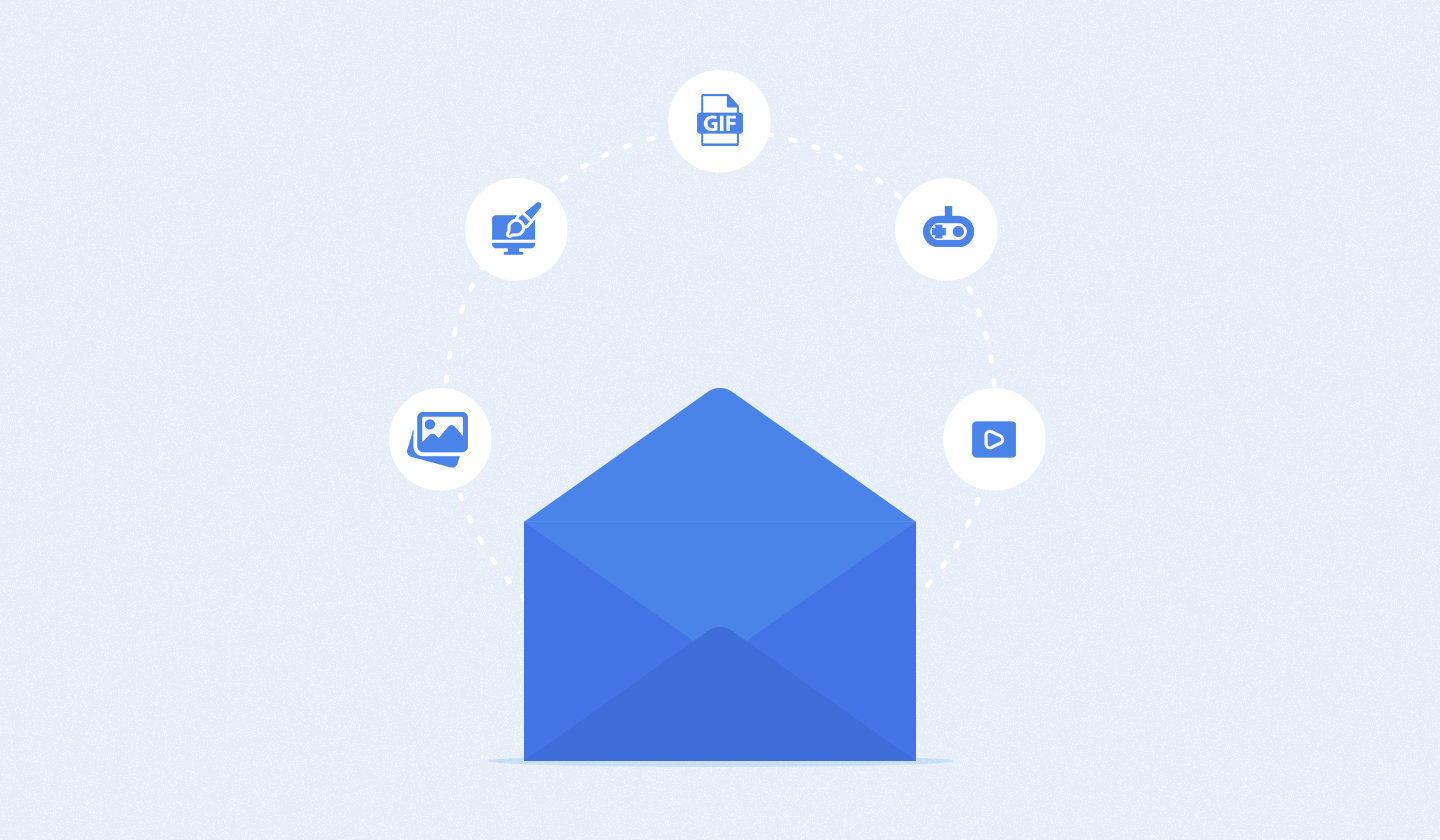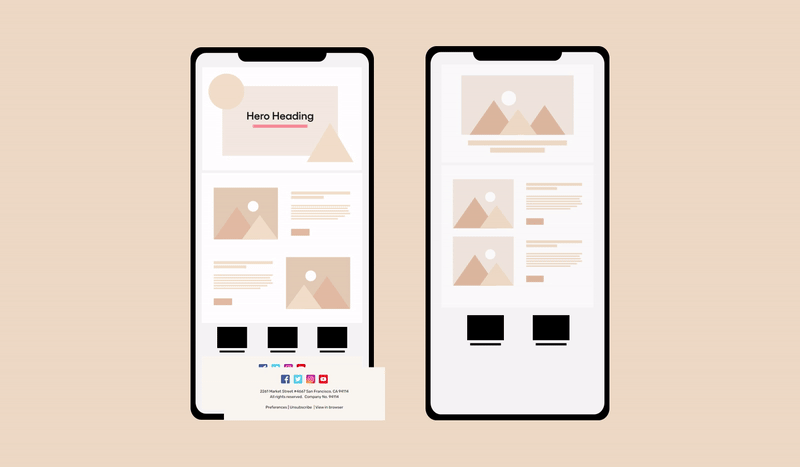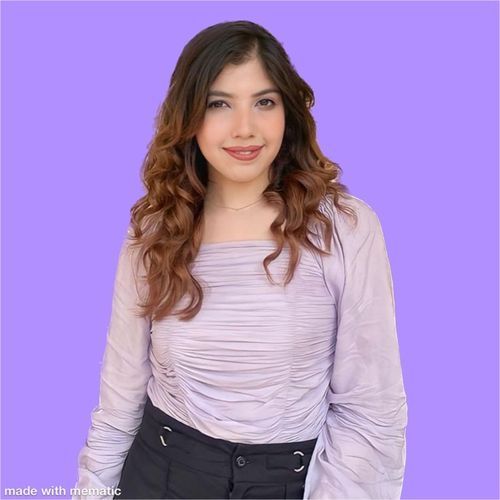In the dynamic world of email marketing, email sequences emerge as silent yet powerful orchestrators of customer engagement and conversions.
Whether you're looking to nurture leads, recover abandoned carts, or build lasting relationships, a well-crafted email sequence can be the driving force behind successful conversions.
In this comprehensive guide, we delve into the art of email sequencing, exploring nine distinct types tailored to various stages of the customer journey.
From the initial welcome series to re-engagement campaigns, each sequence can be strategically designed to captivate your audience, nurture their interest, and guide them seamlessly towards conversion.
So, let’s get started!
What Is an Email Sequence?
An email sequence is a string of automated pre-written emails that are sent to a specific audience over a specified period or triggered by particular actions.
How Are Email Sequences Different From Drip Campaigns?
While email sequences often imply a more dynamic and goal-oriented series of emails that respond to user actions, drip email campaigns are characterized by a more fixed, scheduled delivery of messages over time.
However, in practice, these terms are sometimes used interchangeably, and the distinction between them may vary depending on individual interpretations and industry practices.
Email Sequences | Drip Email Campaigns |
|---|---|
Sequential storytelling: Email sequences are often characterized by narrative or sequential storytelling. Each email builds upon the previous one, guiding the recipient through a logical progression of content or messages. | Timed delivery: Drip email campaigns are characterized by a predetermined schedule or timing for sending emails. Emails are dripped to recipients at regular intervals, often with a fixed time delay between each message. |
Goal-oriented: Email sequences are designed with a specific goal in mind, such as nurturing leads, onboarding new users, or promoting a product launch. The emails work together to achieve that overarching objective. | Consistent schedule: Drip campaigns follow a consistent schedule often triggered by a user action. Emails are sent at predefined intervals, providing a structured and automated communication plan. |
Personalization: Email sequences frequently incorporate personalization elements. Content is tailored based on the recipient's behavior, preferences, or interactions with previous emails. | Lead nurturing: Drip campaigns are commonly used for lead nurturing. They aim to keep leads engaged over time by providing valuable content, educational resources, or promotional offers at scheduled intervals. |
Flexibility: Email sequences offer flexibility in terms of timing and triggers. They can be set up to respond to user actions, such as clicks or form submissions, and can be adjusted based on user engagement. | Automated engagement: Drip campaigns are highly automated, allowing marketers to set up the entire campaign in advance. Once activated, the campaign runs automatically, delivering content without the need for manual intervention. |
Why Should You Be Creating Email Sequences?
Creating email sequences offers several benefits. Here are compelling reasons why you should incorporate these into your email marketing strategy:
1. Nurture leads effectively
Email sequences provide a systematic way to nurture leads over time. You can build trust, educate your audience, and guide them through the sales funnel by sending relevant and valuable content through a well-crafted series of emails.
2. Personalized communication
These emails also allow for personalized communication, as you can tailor the content based on your subscriber’s behavior, preferences, or interactions with previous emails. This personalization enhances the user experience and overall engagement.
Related: How to Personalize Emails the Right Way? 10 Proven Tips
3. Automated engagement
You can automate your email sequences to save time and effort. Once set up, they can run in the background, delivering targeted messages without requiring large-scale manual intervention for each communication.
Related: Explaining Email Automation in 11 Minutes
4. Guided customer journeys
Email sequences enable you to design and guide specific customer journeys. Whether it's onboarding new users, re-engaging inactive subscribers, or promoting a product launch, email sequences provide a structured approach to achieving your goals.
5. Increased conversion rates
By strategically delivering content over a series of emails, you can increase the likelihood of conversions. Each email contributes to building a relationship with your recipient and nudges them towards taking the desired action.
6. Customer retention
By staying in regular contact with existing customers and providing ongoing value, you can strengthen customer loyalty and encourage repeat business.
7. Data-driven optimization
Email sequences provide valuable data on a user's email engagement. You can analyze key email marketing metrics such as click-through rates and conversion rates to optimize and refine your sequences for better results.
8. Increased revenue
Effective email sequences contribute to increased revenue by guiding your prospects and customers towards making purchases or taking other desired actions. The structured approach enhances the chances of successful conversions.
9 Types of Email Sequences You Need to Set up This Minute
Ready to elevate your email game? Let's dive into the nine types of email sequences that you should set up right now to maximize your impact.
1. Welcome & onboarding email sequence
This sequence is designed to introduce your customers to your brand, guide them through your products or services, and encourage them to take specific actions.
Stick with three to four emails in this email sequence because you don’t want to shoo your new subscribers away in the very beginning with too many emails.
Plus, the ideal flow time suggested for these emails is one to two weeks. Space these emails on the basis of your product’s complexity.
Here's a suggested structure for a Welcome and onboarding email sequence. You can also play around with the order of these steps depending on your brand’s needs.

Email 1: Welcome email
Subject line: Welcome to [Your Brand]! 🌟
Express gratitude for the subscription or sign-up.
Briefly introduce your brand's values and mission.
Set expectations for the upcoming emails.
Email 2: Introduction to products/services
Subject line: Explore Our [Product/Service] Features 🚀
Highlight key features and benefits of your products or services.
Include visually appealing images or videos.
Provide links to relevant resources or tutorials.
Email 3: Exclusive offer or incentive
Subject line: Your Exclusive [Discount/Resource] Awaits! 🎁
Provide a special offer, discount, or exclusive resource as a thank-you gesture.
Create a sense of urgency to encourage instant engagement.
2. Upsell & cross-sell email sequence
Retaining existing customers is much more cost-effective than acquiring new ones. That’s where upsell and cross-sell email sequences come in.
You can use these to retain your customers and create a loyal customer base. It is also a strategic approach to encourage existing customers to purchase additional products or upgrade their current selections.
Here's a basic structure for an upsell email sequence.

Email 1: Thank you and confirmation
Subject line: Thank You for Your Recent Purchase! 🌟
Thank them for their recent purchase.
Provide order confirmation details.
Set the tone for a positive customer experience.
Email 2: Upsell introduction
Subject line: Elevate Your [Product/Service] Experience! 🚀
Introduce a premium version or upgraded model of the product they purchased.
Highlight additional features and benefits.
Include compelling visuals and product descriptions.
Email 3: Exclusive upgrade offer
Subject line: Unlock Exclusive Benefits with Our Premium [Product/Service]! 🔓
Present a limited-time offer or exclusive discount for the upgraded version.
Or offer exclusive access.
Position it as a special privilege for valued customers.
Create a sense of exclusivity and importance.
Here’s a suggested structure for a cross-sell email sequence.

Email 1: Cross-sell recommendation
Subject line: Enhance Your Collection with [Complementary Product]! 🌈
Send confirmation for their recent purchase.
Recommend a complementary product that enhances their current purchase.
Explain how the products work well together.
Include customer testimonials or reviews.
Email 2: Limited-time bundle deal
Subject line: Your Favorites Together at a Special Price! 🎁
Bundle the original product with a complementary one for a special price.
Highlight the overall savings compared to purchasing items individually.
Encourage customers to explore the bundled offer.
Share success stories or testimonials from customers who upgraded or cross-sold.
3. Re-engagement email sequence
A re-engagement email sequence is a strategic series of emails designed to reconnect with inactive or disengaged subscribers and encourage them to rekindle their interest in your brand.
Wondering how many emails you should be including in this email sequence? We suggest four emails because it’ll give your customers more chances to engage.
A single email with too much information becomes overwhelming, so the below-suggested structure will break down everything for you without shoving too much information down a customer’s throat with a single email.

Email 1: Attention-grabbing subject line
Subject line: We Miss You! 🌟
Express genuine sentiment about missing their presence.
Use an attention-grabbing subject line to spark curiosity.
Email 2: Personalized content recap
Subject line: Your [Product/Content] Highlights: A Recap Just for You! 🎉
Summarize the key products, services, or content they engaged with in the past.
Include personalized recommendations based on their history.
Invite them to explore what they've been missing.
Email 3: Exclusive offer or discount
Subject line: Welcome Back with [Discount]% Off Your Next Purchase! 🎁
Incentivize a return with an exclusive offer or discount.
Highlight the value they'll receive by re-engaging.
Prompt a sense of urgency with a limited-time offer.
Email 4: Final farewell and options
Subject line: Saying Goodbye or Staying Connected? Your Choice! 👋
Acknowledge their inactivity and gently suggest options.
Provide an option to stay subscribed with tailored content preferences.
If they choose to unsubscribe, express gratitude and leave the door open for future engagement.
4. Abandoned cart email sequence
This type of email sequence is designed to recover potential sales from customers who have added items to their shopping cart but still need to complete the purchase.
Through a three-email abandoned cart series, you can improve your cart recovery.
Send the first email within one hour, the second after 24 hours, and the last email after three to five days down the line.

Email 1: Friendly reminder
Subject line: Forgot Something? Your Cart Misses You! 🛒
Remind the customer about the items left in their cart.
Include compelling visuals of the products.
Add a clear Call-To-Action (CTA) to complete the purchase.
Email 2: Product highlights and benefits
Subject line: Why [Product Name] Deserves a Spot in Your Life! 💖
Showcase the key features and benefits of abandoned products.
Add social proof in the form of customer testimonials.
Reinforce the value of the products.
Email 3: Limited-time offer
Subject line: Final Call! [Discount]% Off Your Abandoned Items! ⏰
Introduce a time-sensitive discount or offer.
Create a sense of urgency to prompt immediate action.
Clearly communicate the expiration of the offer.
5. Event promotion email sequence
Don’t know what to include in your emails promoting your upcoming live event?
Don’t worry!
We’ve got you covered so you can create anticipation, build excitement, and drive attendance for your upcoming event.
Whether it's a webinar, conference, product launch, or any other event, a well-crafted sequence can effectively engage your audience.

Email 1: Save the date announcement
Subject line: Save the Date for [Event Name]! 📅
Announce the date, time, and brief details of the event.
Create curiosity about what attendees can expect.
Include a clear CTA to learn more or register.
Email 2: Event highlights and speakers
Subject line: Sneak Peek: What's in Store at [Event Name]! 🌟
Highlight key event features, agenda, or keynote speakers.
Showcase the value and benefits of attending.
Encourage registration with an enticing CTA.
Email 3: Early bird registration offer
Subject line: Don't Miss Out! Early Bird Registration Now Open! 🎟️
Introduce early bird registration with a special discount or incentive.
Clearly communicate the limited-time nature of the offer.
Include persuasive visuals and a prominent CTA to register.
Email 4: Behind-the-Scenes sneak peek
Subject line: Exclusive Look: Behind the Scenes of [Event Name]! 🎥
Offer a sneak peek into event preparations or exclusive content.
Build excitement by sharing unique aspects of the event.
Remind recipients of the upcoming date and registration details.
Email 5: Countdown to event kickoff
Subject line: The Countdown Begins: [X] Days Until [Event Name]! ⏳
Build urgency by counting down the days to the event.
Include a final call for registration with a compelling CTA.
Remind recipients of key event details.
Email 6: Last-minute registration reminder
Subject line: Final Call: Secure Your Spot at [Event Name] Now! 🚀
Emphasize the urgency of last-minute registration.
Reiterate the benefits of attending.
Include any essential logistics or details, to avoid common logistical issues for a smooth and efficient process.
Email 7: Event day excitement
Subject line: Today's the Day! [Event Name] is Here! 🎉
Generate excitement for the event day.
Share any last-minute details, agenda changes, or surprises.
Include a warm invitation to attend.
Email 8: Post-event recap and thank you
Subject line: Thank You for Making [Event Name] Unforgettable! 🙌
Express gratitude for attendees' participation.
Provide a brief recap of the event's highlights.
Include any post-event resources, such as recorded sessions or slides.
6. Lead nurturing email sequence
You can use this email series in several ways to build relationships with your potential customers, educate them about your products or services, and guide them through the sales funnel.
Send these four emails to your prospects over two to three weeks. This is only a general structure, and you can customize them as per your needs.

Email 1: Educational content
Subject line: Unlocking [Key Industry Knowledge] with [Your Brand] 🧠
Share valuable content related to your industry.
Position your brand as an authority.
Include a CTA for further engagement.
Email 2: Product or service spotlight
Subject line: Discover [Product/Service]: Your Solution to [Customer Pain Point]! 💡
Highlight a specific product or service.
Showcase key features and benefits.
Encourage recipients to explore more details.
Email 3: Customer success story
Subject line: Real Success: How [Customer Name] Achieved [Result] with [Your Brand]! 🏆
Share a compelling customer success story.
Highlight the positive outcomes achieved.
Include a CTA for further exploration or consultation.
Email 4: Exclusive offer or demo invitation
Subject line: Experience [Product/Service] Like Never Before! 🎁
Present an exclusive offer, discount, or demo invitation.
Create a sense of exclusivity for recipients.
Include a clear CTA to take advantage of the offer.
7. Follow-up email sequence
A follow-up email sequence is essential for re-engaging with recipients who haven't responded to your initial outreach.
We recommend sticking with a three-email series because you don’t want to overwhelm your recipients with too many emails.
Firstly, send an opening email. Then, roll out a gentle reminder two to three days after the initial email. Finally, wrap this sequence up with a break-up email four to five days after the previous email.
However, don’t forget to leave the door open for future interactions in the final email.

Email 1: Initial outreach
Subject line: [Your Value Proposition] - Let's Connect! 🚀
Briefly introduce yourself and your value proposition.
Clearly state the purpose of your email.
Include a CTA for further engagement.
Email 2: Gentle reminder
Subject line: Quick Reminder: [Your Value Proposition] 📆
Remind them about your previous email.
Reiterate the value you offer.
Include a polite request for a response or acknowledgment.
Email 3: Closing and future connection
Subject line: Let's Keep the Door Open for Future Conversations! 👋
Summarize the follow-up sequence and express gratitude.
Provide contact information for future inquiries.
Leave the door open for future interactions.
8. Feedback email sequence
A feedback email sequence is an effective way to collect insights, opinions, and suggestions from your audience. This way, you can find out how helpful your product is and what improvements you need to make in the future.
As every customer is not willing to share feedback upon a single email, you need an email sequence to nudge them to share their valuable reviews.
Recommended emails in this sequence are three emails over the course of one week.

Email 1: Initial request for feedback
Subject line: Share Your Experience with [Product/Service/Event]! 🌟
Express appreciation for their recent interaction.
Clearly state the purpose of the email to gather feedback.
Include a brief and straightforward survey or feedback form.
Email 2: Reminder and incentive
Subject line: Your Feedback Matters + [Incentive] Inside! 🎁
Remind them about the feedback request.
Mention any incentive or reward for completing the survey.
Include a direct link to the survey or feedback form through a CTA.
Email 3: Thank you and closing
Subject line: Your Feedback Makes a Difference. 🙏
Express heartfelt gratitude for their participation.
Highlight specific improvements or changes based on their feedback.
Provide contact information for further inquiries or feedback.
9. Renewal email sequence
It is always essential to encourage customers to renew their subscription, membership, or service before the renewal date.
The goal is to communicate the value of your offering, remind customers of the benefits they receive, and prompt them to extend their commitment. Here's how you can go about creating a renewal email sequence.

Email 1: Early renewal reminder
Subject line: Act Now and Save! Early Renewal Offer Inside. 🌟
Remind customers that their subscription is due for renewal.
Highlight any early renewal discounts or incentives.
Add a clear CTA for them to renew.
Email 2: Countdown to expiry
Subject line: Time is Running Out: Renew Your [Subscription/Service] Now! ⏳
Create urgency by emphasizing the approaching expiration date.
Include a countdown timer or specific date for renewal.
Include a CTA for them to renew.
Email 3: Exclusive renewal offer
Subject line: Exclusive Renewal Offer: [Discount/Incentive] Waiting for You! 🎁
Introduce a special offer or discount exclusive to renewing customers.
Clearly communicate the added value of renewing.
Encourage them to take advantage of the limited-time offer.
Email 4: Final countdown
Subject line: Final Hours: Secure Your [Subscription/Service] Renewal Now! ⌛
Reiterate the urgency as the renewal deadline approaches.
Include a final CTA with a clear renewal link.
Express appreciation for their ongoing partnership.
Email 5: Last-chance reminder and thank you
Subject line: Last Call: Renewal Opportunity is Ending! 🚨
Remind them that it's their last chance to renew.
Express gratitude for their past support.
Provide contact information for any questions or assistance.
8 Best Practices to Ace Your Email Sequences
We suggest following the eight best practices to get the most out of your email sequences.
1. Set clear-cut goals
Every email sequence has a specific goal that you should keep in mind. For example, the purpose of a cart abandonment email sequence is to nudge customers to buy, while a re-engagement email sequence should bring customers back to your site.
Therefore, define specific and measurable goals for each email sequence. Whether it's lead nurturing, product onboarding, or re-engagement, having clear objectives helps you craft more effective messages.
2. Identify and set up triggers
For increased conversions, you must identify and set up the triggers that send the emails to the right people at the right time.
For example, a trigger for a welcome email sequence would be a sign-up or subscription to your service.
Meanwhile, an example of an email sequence trigger for an abandoned cart would be someone who has added items to their shopping cart but hasn’t completed the purchase.
3. Lay out each email sequence
Once you’ve identified and set up the triggers, it’s time to decide how many emails should be in an email sequence and what content to include.
Some email sequences are longer than others. And the length depends on your sales process. For example, a B2B company might have a longer event promotion email sequence than a B2C business using an abandoned cart email sequence.
4. Write engaging subject lines
Engaging subject lines are crucial for capturing the attention of your audience and enticing them to open your emails. Here are a few tips to create subject lines for your email sequences.

Personalization: Use the recipient's name or reference their specific actions.
Urgency: Create a sense of urgency to prompt immediate action.
Curiosity: Spark curiosity by teasing valuable content or surprises.
Relevance: Ensure subject lines align with the content of the email.
Length: Keep subject lines concise and mobile-friendly.
Frequently A/B test different variations of subject lines. This will help you identify what resonates best with your audience.
5. Include relevant content
Including relevant and valuable content in your email sequences is essential for engaging your audience, building trust, and driving desired actions. Look at the tips below on how to make your email copy relevant.
Segmentation: Tailor content based on customer segments and preferences.
Personalization: Use customer data to personalize recommendations and offers.
Timeliness: Ensure content is timely and aligns with current events or promotions.
Consistency: Maintain a consistent brand voice and messaging across all emails.
Customer-centric approach: Focus on solving customer problems and meeting their needs.
6. Include a Strong Call-to-Action (CTA):
Clearly state the desired action you want your recipients to take. Use actionable and specific language in your CTAs, guiding your recipients on what to do next.
Ensure CTAs are visually appealing with contrasting colors and are easily tappable on mobile devices. Plus, maintain a consistent CTA style throughout your email sequences.
7. Make it mobile-friendly
By prioritizing mobile responsiveness, you enhance the user experience for recipients accessing your email sequences on various devices.
Here are key considerations to make your email sequences mobile-responsive:
Responsive design: Use responsive email design to ensure your emails adapt to various screen sizes.
Font and text size: Use legible fonts and maintain an appropriate text size. Avoid tiny fonts that may be difficult to read on smaller screens.
Single-column layout: Opt for a single-column layout to simplify the reading experience on narrow screens. Avoid complex multi-column email design mistakes that may be challenging to navigate on smaller devices.
Images and media: Optimize images for mobile viewing to reduce load times.
Alt text for images: Include descriptive alt text to convey the message even if images are disabled. Alt text is crucial for accessibility and a positive user experience.
Interactive elements: If using interactive elements, ensure they are touch-friendly. Test buttons, sliders, and other interactive features on mobile devices.
8. A/B test email sequences
A/B testing is a valuable strategy to optimize and improve the performance of your email sequences.
Determine the specific elements you want to test in your email sequences. This could include subject lines, content, CTAs, images, or sending times.
Also, divide your target audience into two or more segments.
Then, develop variations for the elements you're testing. For instance, when testing subject lines, create two different subject lines for each email and simultaneously send each variation to its respective segment.

Track relevant email marketing metrics based on your objective (e.g., open rates, click-through rates, conversion rates).
Finally, analyze the results to determine which variation performed better and implement the changes suggested by the winning variation.
Unlayer: The Ideal Choice for Designing Email Sequences
Unlayer is a popular email design tool that allows you to create visually appealing emails with ease.
Here's a step-by-step guide on how to design enticing email sequences with Unlayer:
1. Sign in to Unlayer
Log in to your Unlayer account or sign up if you don't have one.
2. Choose an email template
Unlayer offers a variety of customizable email templates. Choose a template that suits the purpose and style of your email sequence.
3. Drag and drop elements
Use its intuitive drag and drop interface to add elements to your email. Elements can include text, images, buttons, dividers, social media links, and more.
4. Customize content
Edit the text as per your needs. Upload visuals of your choice.
5. Personalize with merge tags
Unlayer supports merge tags for personalization. Incorporate recipient names or other personalized information using merge tags.
6. Set colors and fonts
Customize the color scheme and fonts to align with your brand.
7. Add CTAs and links
Include clear CTA buttons and hyperlinks.
8. Responsive design
Preview your email sequence to ensure it looks good on both desktop and mobile devices. Unlayer automatically optimizes for responsiveness.
9. Save your design
Once done designing, save your email design within Unlayer. This allows you to revisit and edit the design later or use it as a template for future sequences.
10. Export or integrate
Once satisfied with the design of your email sequence, export it as a PDF or integrate it with your preferred email service providers.
Wrap Up
In conclusion, mastering the art of email sequences can be a game-changer for your email marketing efforts, significantly boosting conversions and nurturing lasting relationships with your target audience.
By incorporating the diverse range of email sequences outlined above—such as welcome series, re-engagement campaigns, and upsell sequences—you'll not only elevate your conversion rates but also deliver a more personalized and engaging experience for your subscribers.
Remember to continually analyze email performance metrics, iterate based on insights gained, and stay attuned to evolving trends to keep your email sequences both effective and innovative in the dynamic landscape of email marketing.

